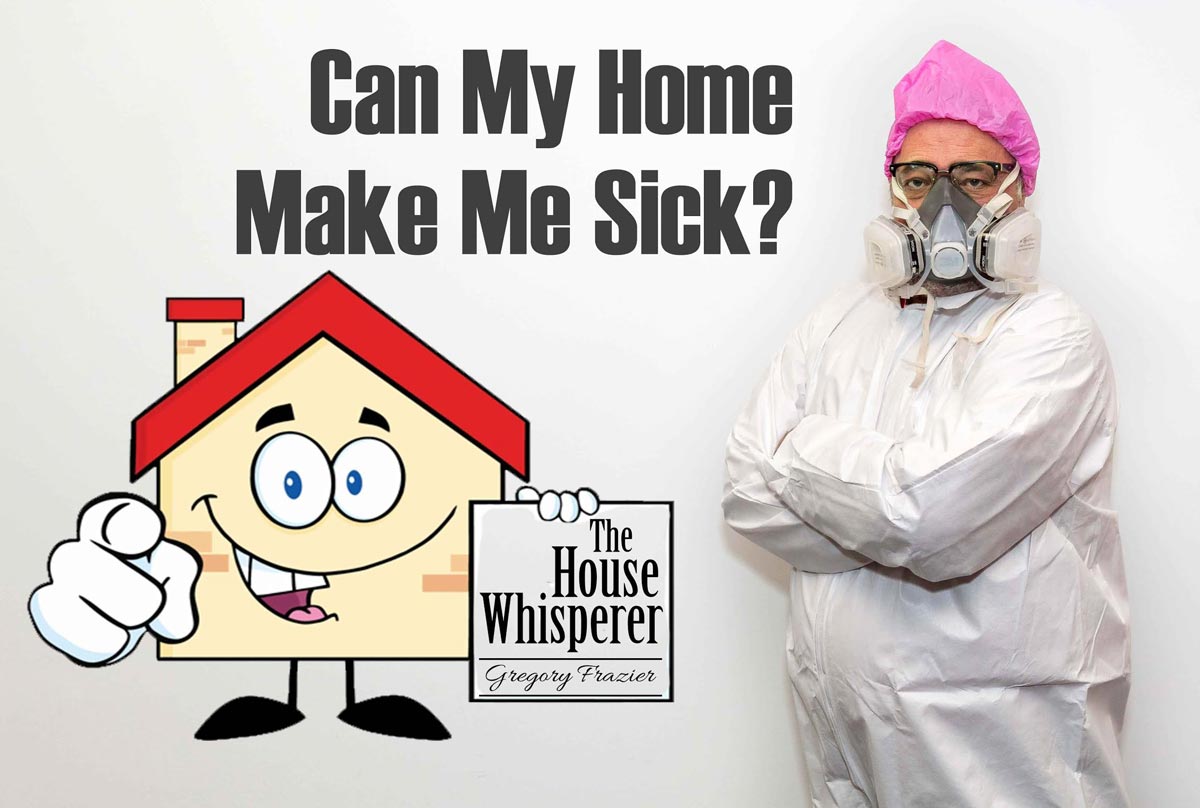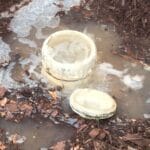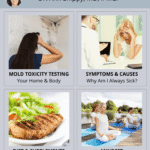Have you ever wondered why you constantly feel under the weather when you’re at home, but feel fine elsewhere? Your home is supposed to be your sanctuary, a place where you unwind and recharge.
Yet, it might be the very reason behind your persistent headaches, allergies, or fatigue. You’re not alone if you’ve asked yourself, “Why is my home making me sick? ” Imagine walking into a room and instantly feeling a weight lifted off your shoulders.
Now picture the opposite – entering your home and feeling an inexplicable heaviness. This isn’t just your imagination. There’s science behind how certain elements in your home can impact your health. From hidden mold in the walls to the chemicals in your cleaning products, many factors could be affecting your well-being without you even realizing it. We’ll uncover the surprising culprits that might be making you feel unwell in your own space. You’ll gain insights into how you can transform your home into a healthier environment, ensuring that it truly becomes a place of comfort and healing. Keep reading to discover how you can reclaim your health and happiness within your own four walls.
Indoor Air Quality
Indoor air quality impacts your health. Many homes contain hidden pollutants. These pollutants can lead to various health issues. Understanding them is crucial. It helps in creating a healthier living space.
Common Pollutants
Several pollutants affect indoor air. Dust mites are common. They thrive in carpets and bedding. Mold spores can also be a problem. They grow in damp areas. Pet dander is another culprit. It can trigger allergies. Volatile organic compounds (VOCs) are found in paints and cleaners. They release harmful gases. Tobacco smoke is a well-known pollutant. It affects both smokers and non-smokers.
Effects On Health
Poor air quality can cause many health problems. Allergies are frequent. Symptoms include sneezing and itchy eyes. Asthma attacks can also increase. People may experience headaches. Fatigue is another common symptom. Long-term exposure is harmful. It can lead to respiratory issues. Children and elderly are more vulnerable. They need extra care. Ensuring good air quality is essential. It promotes overall well-being.
Mold And Mildew
Mold and mildew in homes can cause health issues like sneezing, coughing, and headaches. These fungi thrive in damp spaces, often hidden in walls or under carpets. Regular cleaning and good ventilation can help reduce their presence, keeping your home healthier.
Mold and mildew are silent invaders in many homes, often going unnoticed until they start affecting your health. These fungi thrive in damp, humid environments, making bathrooms, basements, and kitchens their favorite spots. You might not see them at first, but their presence can be felt through musty odors and, more alarmingly, their impact on your well-being.Identifying Mold
Identifying mold early can save you a lot of trouble. Look for black, green, or white spots on walls, ceilings, and around windows. A persistent musty smell is another giveaway that mold might be lurking nearby. Check areas that are prone to moisture, like under sinks and around leaky pipes. If you notice condensation or water stains, investigate further. Early detection is key to preventing the spread of mold.Health Risks Associated
Mold exposure can lead to a range of health issues. Common symptoms include sneezing, coughing, and itchy eyes. For those with allergies or asthma, mold can trigger severe reactions. Long-term exposure might lead to respiratory problems and even infections. It’s important to take any sign of mold seriously and address it promptly. Have you ever noticed your symptoms improving when you leave home? Mold might be the culprit. Understanding the risks helps you take proactive steps to protect your health. Don’t let mold take control of your living space. Take action at the first sign of trouble, and breathe easier knowing your home is a safe haven.Chemical Exposure
Your home should be your sanctuary, a place of comfort and safety. Yet, it might be contributing to your health issues due to chemical exposure. Everyday items contain chemicals that can impact your well-being. Understanding the sources of these chemicals helps you make informed choices.
Household Cleaners
Household cleaners often promise a gleaming surface but come with hidden risks. Many contain harsh chemicals that can irritate your skin and lungs. Have you ever felt a tickle in your throat after cleaning? That could be a reaction to these chemicals.
Consider switching to natural cleaning products. Lemon juice and vinegar are effective and safe alternatives. They not only clean but also reduce your chemical exposure.
Volatile Organic Compounds
Volatile Organic Compounds (VOCs) are present in everyday items like paints, air fresheners, and even furniture. They evaporate into the air and can affect your indoor air quality. Do you often suffer from headaches at home? VOCs might be the culprit.
Choose low-VOC or VOC-free products to improve your home environment. Ventilating your space by opening windows can also help disperse these compounds.
As you reassess your home environment, ask yourself: Are the products I use worth the health risks? Small changes can lead to significant improvements in your health and comfort.

Credit: www.theguardian.com
Water Contamination
Contaminated water can lead to health issues in your home. Drinking or using polluted water may cause headaches, fatigue, or skin irritation. Testing water quality and using filters can help reduce health risks.
Have you ever wondered if the water flowing from your tap could be the reason you’re feeling unwell? Water contamination is an often-overlooked factor that can significantly affect your health. This issue can quietly infiltrate your home, turning a basic necessity into a potential health hazard. Understanding the sources and impacts of water contamination can help you safeguard your health and well-being.Sources Of Contamination
Water contamination can originate from several sources. Pipes in older homes might contain lead, which can leach into your water supply, especially if the pipes are corroded. Agricultural run-off is another common culprit, introducing pesticides and fertilizers into your water, which can be harmful if ingested over time. Household plumbing systems can also host bacteria, especially if they’re not regularly cleaned or maintained. Even naturally occurring substances like radon or arsenic can seep into your water from the surrounding environment. It’s crucial to know what’s in your water and take steps to address any potential contaminants.Impact On Health
The effects of water contamination on health can range from mild to severe. Drinking contaminated water can lead to gastrointestinal issues, including nausea and diarrhea. Long-term exposure to contaminants like lead can have more serious consequences, such as developmental problems in children and kidney issues in adults. You might notice unexplained fatigue or skin irritations, which could be linked to your water. Testing your water can provide clarity and help you take the necessary steps to protect your health. Have you considered the last time you checked the quality of your home’s water? Taking action is key. You can use water filters to reduce contaminants or seek professional testing services for a more comprehensive analysis. Addressing water contamination is not just about fixing pipes or adding filters; it’s about ensuring your home is a safe haven for you and your family.Pests And Allergens
Hidden pests and allergens could be the cause of your constant sneezing and headaches at home. Dust mites, mold, and cockroach droppings often lurk unnoticed, triggering allergic reactions. Keeping your living space clean and well-ventilated might help reduce these health issues.
Is your home supposed to be your sanctuary but instead feels like it’s making you sick? Pests and allergens might be the culprits lurking in the shadows. They can sneak into your home and disrupt your comfort and health without you even noticing. Let’s dive into how these uninvited guests can affect your well-being and what you can do to reclaim your space.Common Household Pests
Pests like cockroaches, rodents, and dust mites are more than just nuisances. They can trigger allergies and asthma, especially in children. Cockroach droppings and saliva can spread bacteria and contaminate food. You might not see them during the day, but their presence is often felt through unpleasant smells or droppings found in corners. Rodents, like mice and rats, can bring diseases into your home. They chew through wires, causing potential fire hazards. Their urine and droppings can contribute to respiratory issues. Dust mites thrive in warm, humid environments. They’re nearly invisible but can provoke allergic reactions. Consider your bedding, furniture, and carpets as prime real estate for these tiny critters.Managing Allergies
Have you noticed an increase in sneezing, itchy eyes, or breathing difficulties at home? Your allergies might be flaring up due to indoor allergens. Keep your home clean and well-ventilated. Regularly vacuum with a HEPA filter and wash bedding in hot water to reduce dust mites. Seal cracks and openings to prevent pests from entering. Use pest-proof containers for food storage. An organized and clutter-free space can make it harder for pests to settle. Consider investing in an air purifier. This can help reduce airborne allergens, making breathing easier. Ask yourself if your cleaning products are helping or hurting. Some chemicals can irritate your respiratory system. Opt for natural or fragrance-free options to minimize irritation. Are you ready to take control of your home environment? By understanding the role of pests and allergens, you can create a healthier living space for you and your family. Remember, a few simple changes can make a significant difference.Building Materials
Building materials play a significant role in your home’s health. These materials impact the air quality and overall safety. Some materials can cause health issues, making your home environment unsafe. Understanding these risks helps protect your well-being.
Toxic Materials
Some building materials contain harmful chemicals. Asbestos, often used in older homes, can cause lung diseases. Lead, once common in paints, poses serious health risks, especially to children. Volatile Organic Compounds (VOCs) are found in many household products. They can cause headaches, dizziness, and respiratory problems. Formaldehyde, used in some wood products, irritates eyes and throat. Identifying these materials is crucial for a healthy home.
Safe Alternatives
Choose safe materials to improve your home’s health. Opt for low-VOC paints and finishes. They reduce harmful emissions indoors. Use natural materials like bamboo or cork for flooring. They are sustainable and safer. Select formaldehyde-free wood products. They limit exposure to toxic chemicals. Consider using recycled or reclaimed materials. They support both health and the environment.
Electromagnetic Fields
Electromagnetic fields from household devices might be affecting your health. Many people report headaches and fatigue. It’s important to identify and manage these sources to ensure a healthier living environment.
Electromagnetic fields (EMFs) are invisible areas of energy that are produced by electricity. They’re all around us and can be found in various places in our homes. It’s interesting to think about how something unseen might be affecting your health. Have you ever wondered if the gadgets you love could be making you feel unwell? Let’s explore the sources and potential health effects of EMFs in your home.Sources In The Home
Your home is filled with devices that emit electromagnetic fields. Common culprits include Wi-Fi routers, cell phones, and even your microwave. If you’re like most people, these devices are on 24/7, constantly sending out EMFs. Even your home’s wiring can be a source. Did you know that the electrical system in your walls creates low-level EMFs? It’s fascinating how something so essential can also be a potential health risk.Potential Health Effects
The big question is: how do these EMFs affect your health? Some people report headaches, fatigue, and even sleep disturbances. If you’ve ever had a headache that you couldn’t quite explain, could EMFs be the cause? Research is still ongoing, but some studies suggest a possible link between EMFs and certain health issues. While definitive answers are still up in the air, it’s worth considering how often you’re exposed to these fields. Could reducing your exposure to EMFs improve your well-being? Simple steps like turning off devices when not in use or keeping your phone away from your bed at night might make a difference. Isn’t it time to think about how your environment influences your health?
Credit: www.youtube.com
Improving Home Environment
Your home should be a sanctuary of health and comfort. Yet, many homes harbor hidden hazards. These hazards can lead to health issues. Improving your home’s environment can reduce these risks. Simple changes can make a big difference.
Air Purification Techniques
Indoor air can be more polluted than outdoor air. Consider using air purifiers. HEPA filters capture harmful particles. Plants can improve air quality too. Spider plants and ferns are effective. Open windows when possible. Fresh air is a natural purifier.
Regular Maintenance Tips
Regular maintenance keeps your home healthy. Check for mold in damp areas. Mold spores can cause respiratory problems. Fix leaks promptly. Leaky pipes increase moisture, encouraging mold growth. Clean air ducts regularly. Dust and allergens accumulate over time. Inspect HVAC systems annually. They should run efficiently and safely.

Credit: www.artplumbingandac.com
Frequently Asked Questions
What Are Common Indoor Pollutants?
Dust, mold, and chemicals are common indoor pollutants. They can affect your health. Check ventilation.
Can Mold In My Home Cause Health Issues?
Yes, mold can cause allergies and respiratory problems. Look for damp areas. Clean and fix leaks.
How Does Poor Ventilation Affect Health?
Poor ventilation traps pollutants inside. This can lead to headaches and allergies. Open windows for fresh air.
Why Does My Home Have A Musty Smell?
A musty smell often means mold or mildew. Check damp areas and clean regularly. Ensure good ventilation.
Can Household Cleaners Make Me Sick?
Yes, some cleaners contain strong chemicals. They can irritate skin and lungs. Use natural alternatives if possible.
Conclusion
Your home should be a place of comfort. Not a cause of illness. Identify potential hazards. Mold, dust, and chemicals can harm health. Simple changes make a big impact. Regular cleaning helps reduce allergens. Ventilation improves air quality. Choose natural cleaning products.
Seek professional help if problems persist. Take action today. Create a healthier living space. Feel better at home. Protect your health and well-being. Small steps lead to big results. Prioritize a healthy environment. Your home deserves care and attention. Live healthier.
Live happier. Transform your home into a sanctuary. Your body will thank you.




